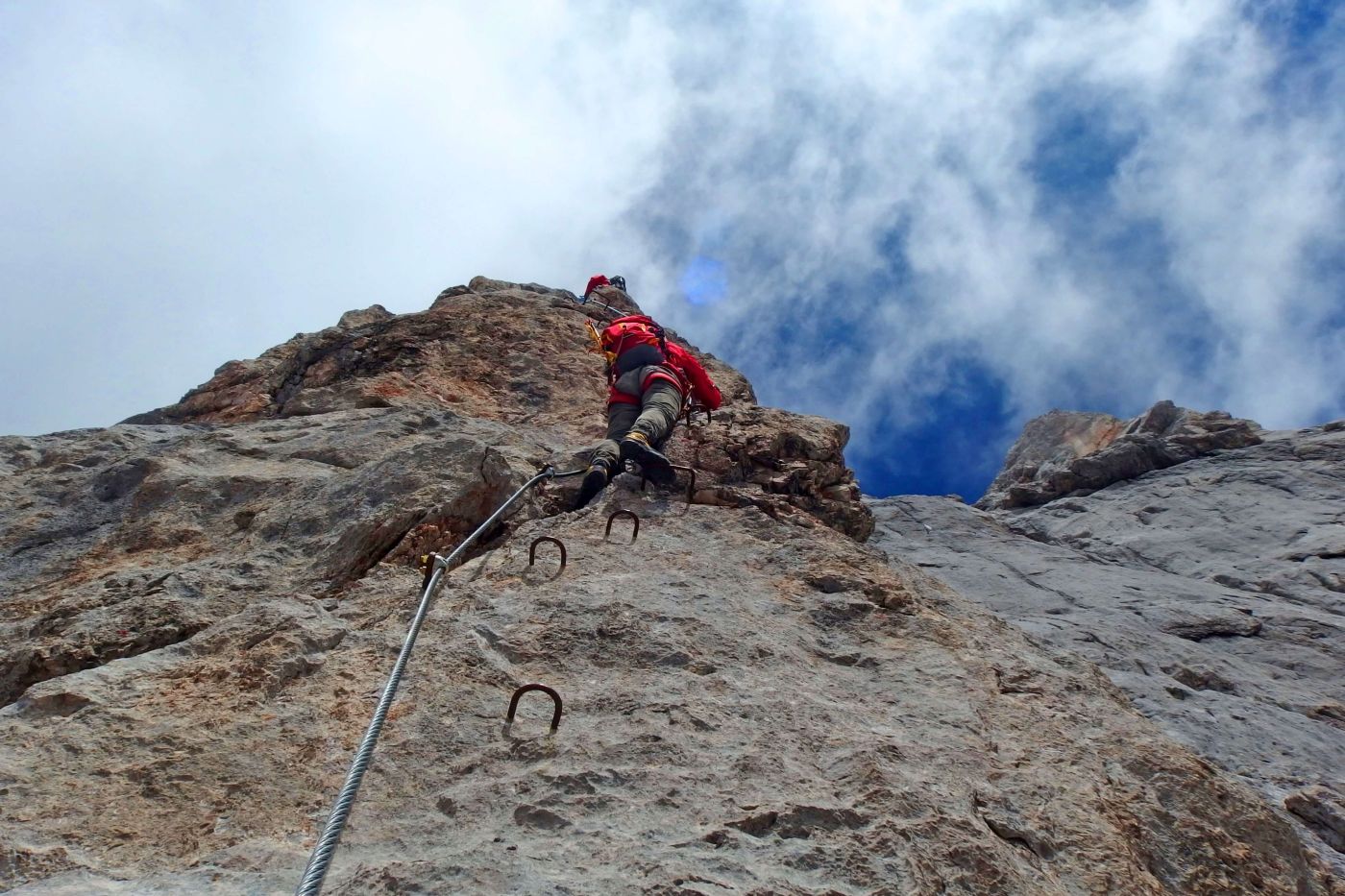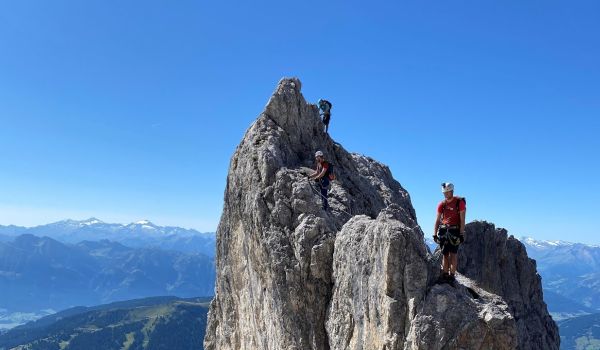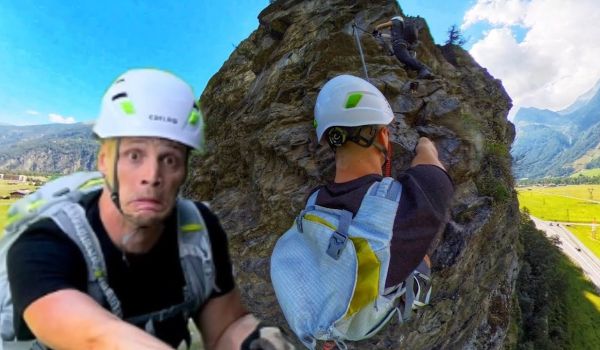via ferrata grades

Schall & Hülser difficulty levels in comparison
There are now also suitable scales for via ferrata. These can vary again from region to region, but two rating systems have become established: The Hüsler and Schall scales. They differ primarily in that Hüsler uses a verbal classification and Schall uses a letter classification. Thus, the easiest level of difficulty corresponds to the letter A or the statement "little difficult", while the highest level of difficulty is indicated by E or "extremely difficult".
The development towards more and more demanding via ferratas has led to the addition of a new difficulty level, F. Currently, however, there are only two via ferratas in the F category in the Alpine region - the Arena variant of the Bürgeralm via ferrata and the F variant of the den Postalm via ferrata in Austria.
The via ferrata scales also have clearly defined skill and equipment requirements. While experienced via ferrata climbers can get by without a via ferrata set in the beginning, for example, it becomes obligatory as the difficulty increases. There are now some extreme via ferratas that go off the scale. It is essential to find out in advance what the condition and requirements are on the via ferrata to be climbed.
Table: Hüsler & Schall via ferrata scales
| Schall | Hüsler | Terrain | Safety | Ability | Equipment |
|---|---|---|---|---|---|
| A Easy |
K1 | Flat to steep, mostly rocky or interspersed with rocks, exposed passages possible | Wire ropes, chains, iron clamps, individual short ladders. Ascent is largely possible without the use of safety devices. | Steady footing and a head for heights recommended | Via ferrata equipment recommended. Experienced walkers may not require safety equipment. |
| B Moderately difficult |
K2 | Steep rocky terrain, some small steps, exposed sites | Wire ropes, chains, iron clips, stepping pins, longer, possibly vertical ladders. Difficulties without safety elements up to III (UIAA). | Steady footing and a head for heights, good condition, some power and endurance in arms and legs | Via ferrata equipment recommended |
| C Difficult |
K3 | Steep to very steep rocky terrain, mainly small steps, longer potentially very often exposed passages | Wire ropes, iron clamps, stepping pins, longer or over hanging ladders. Clamps and pins can also be further apart. In vertical sections partly only wire rope. Difficulties without safety elements up to IV (UIAA). | Steady footing and a head for heights, good condition, power and endurance in arms and legs | Via ferrata equipment strongly recommended, untrained children may have to take the rope |
| D Very difficult |
K4 | Vertical, often overhanging terrain, mostly very exposed | Wire rope, iron clamps and stepping pins are often far apart. On exposed and steep places often just a wire rope. | Enough strength in arms and hands, as longer vertical to overhanging areas and smaller climbing areas up to II /UIAA) possible. | Via ferrata equipment obligatory, even experienced via ferrata climbers may require the use of a rope. Not suitable for beginners and children! |
| E Extremely difficult |
K5 | Vertical to overhanging, exposed throughout, very small steps or slab climbing | Wire rope, iron clamps and stepping pins are often far apart. On exposed and steep places often just a wire rope. Often combined with scrambling. | A lot of strength in hands (fingers), arms and legs, increased level of condition, mobility. | Via ferrata equipment obligatory, rope teamwork is worth considering, especially when touring places without safety devices. Not suitable for beginners and children! |
| F > Extremely difficult |
K6 | Primarily overhanging, exposed, very small steps or slab climbing | Wire rope, iron clamps and stepping pins are often far apart. Combined with scrambling. | Good climbing technique is imperative, a lot of strength in hands (fingers), arms and legs, increased level of condition, mobility | Via ferrata equipment obligatory, top rope climbing equipment recommend. Not recommend for people who cannot manage difficulty level E without problems. |



